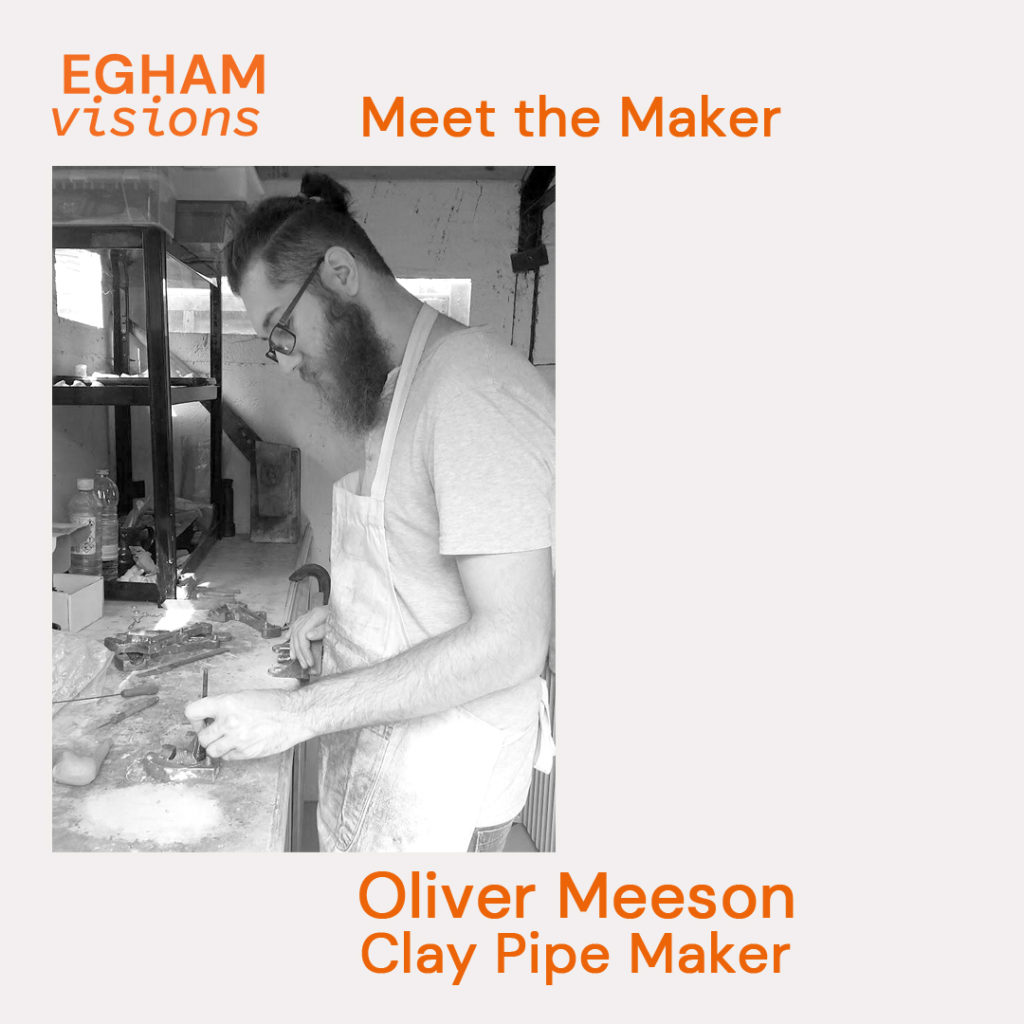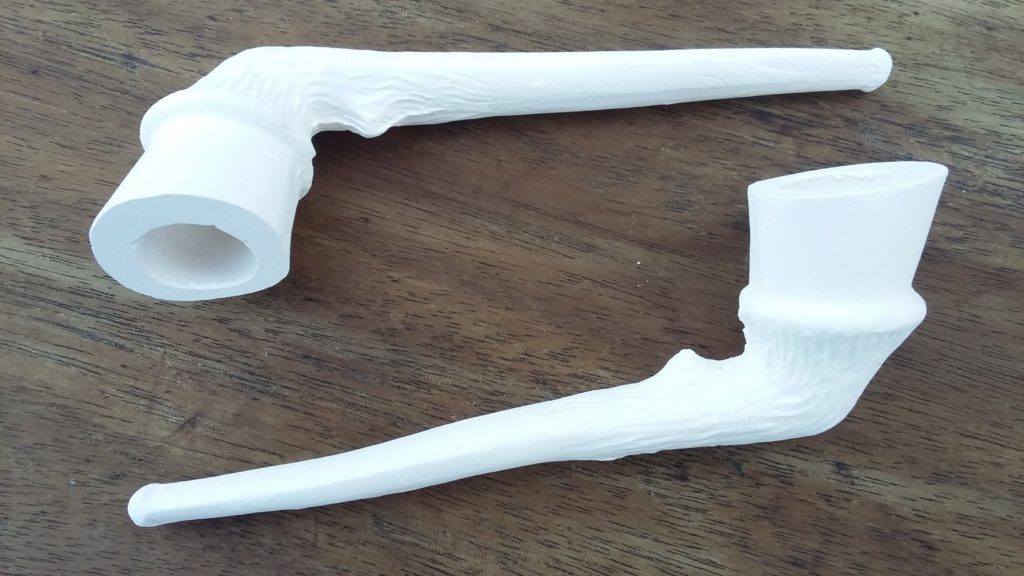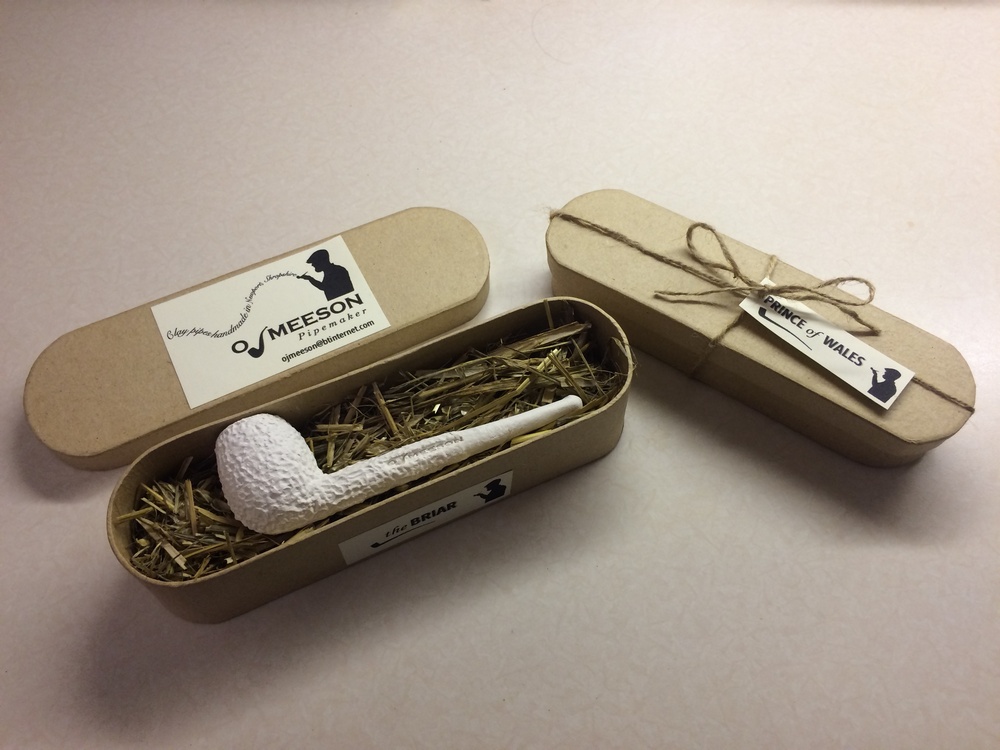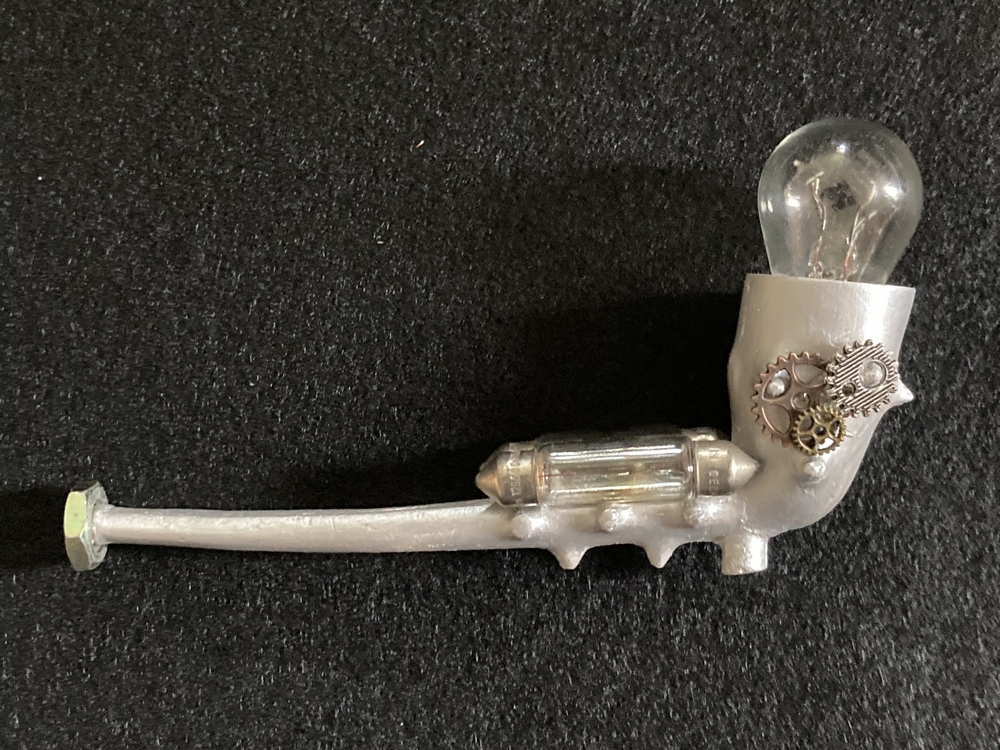
Maker: Oliver Meeson, Tobacco Clay Pipe Maker
Interviewed by artist Estella Castle
Process: Clay Pipe Making with Oliver Meeson
Can you tell us how you became involved in clay pipe making?
I became involved with pipe making purely by chance. My Father attended a local history society meeting, where the guest speaker was a local pipemaker, Rex Keys. During the talk and pipemaking demonstration, Rex informed the audience that he was planning to retire and was looking for someone to continue the craft. Upon returning home with two of Rex’s pipes, my Father told me what Rex had said and this sparked my interest. I contacted Rex and arranged to spend an afternoon with him learning the ropes. With Rex’s help I have continued to make pipes, using modern copies of 19th century pipe moulds.
You mentioned that you have a background in art, how does this compliment your profession as a clay pipe maker?
I studied art at college, but my creative nature started long before then. I have always enjoyed working with my hands, making models, painting and sculpting figures out of clay. Learning new techniques at college has allowed me to be more inventive with my clay pipes, for example using paint to create different finishes. I’m currently working on a selection of pipes to appeal to the Steampunk fans.
How were these pipes used originally and who sold them?
The general purpose of a clay pipe is for the smoking of loose-leaf tobacco. The tobacco would be pushed into the pipe bowl and lit using a match, the smoker drawing air through the pipe, causing the tobacco to burn. Pipes were generally sold by tobacconists or bought from public houses or Inns. Although most were produced for smoking tobacco, there were also pipes produced for purely decorative purposes, such as the porcelain pipe made by Southern’s & Co, to show off the skill and craftsmanship of their pipemakers. Then there’s the bubble pipe, a small pipe designed for children, to blow bubbles with.
Each pipe has a different design or imagery depicted on the pipe’s bowl, can you tell us a little more about some of the histories of the designs you make?
Decorative pipe bowls became popular in the late 19th century, and were a way for pipe making companies to show off their skills, the more detailed and difficult the design the more competent the maker looked. Pipes were made for political and commemorative events, some even featured mythical creatures, a good example being the R.A.F Gremlin pipe. Although a late design, the Gremlin pipe bowl featured the mythological creature often referred to whenever something went wrong or there was a mechanical failure, the engineers would blame it on the gremlins!
Can you explain the process of making clay pipes step by step?
Firstly, you start with a lump of clay the size of an egg and roll it out into the rough shape of a pipe. This is known as a dummy. You then place it on the mould to measure it up before lubricating the mould to ensure the clay does not stick to the mould. You then put the dummy back into the mould and place it in a vice. To put the hole in the bowl of the pipe, you use a plunger or as they are traditionally known as a ‘Gin Press’. To thread the hole through the stem of the pipe you use a long piece of wire. This can be done either before or after pressing. The pipe is then left to dry for 24 hours, before firing.
How old are the moulds you use? Would you consider making and designing your own moulds?
All of the pipe moulds I use are brass or aluminium replicas of the original cast iron moulds. Most of the moulds date from the late 19th century (Victorian period), the exception being the R.A.F Gremlin, which dates from the late 1930s. I would like to design my own pipes at some point, as it would be quite rewarding to create something that I could say was truly my own design. However, the process is quite labour intensive and would take time to do, although probably worth the effort in the end.
What type of people buy your pipes and what are the various uses that your customers purchase them for?
I sell most of my pipes to the general public, either at craft fairs as ‘day out’ souvenirs or online through my website. I also sell pipes to re-enactment groups and historical societies and these are usually used as costume props. I recently provided pipes as wedding gifts for an officer serving in the ‘Blues and Royals of the Household Cavalry’. He wanted to give his groomsmen and honour guard, clay pipes to mark the day and as gifts. He wanted to emulate a general who had his men make pipes whilst campaigning in Egypt, whilst fighting the Mahdi’s army in the 1880s. The pipes were designed like a horses leg, with the pipe bowl being the hoof. Of course some people buy them just to smoke with.
Why do you think it’s important that clay pipe making in the UK doesn’t die out and what is the importance of new people taking up endangered crafts?
I believe it’s important clay pipe making and other endangered crafts continue, as they are an integral part of our history that is not just written in history books and black and white photographs, but as living history and to experience the way in which our ancestors lived and worked. If more young people take up endangered crafts then we would not only have a wide variety of craftsman to make bespoke items of high quality but also keep our national heritage crafts alive too.
What advice would you give to someone starting out?
Don’t give up and build a reputation. Get out there and sell your work wherever you can and don’t be afraid to hunt down those sales. Attend events where you can give demonstrations of your craft and of course promote yourself online. But above all, enjoy what it is you do!
What resources would you recommend, such as books or websites or suppliers?
Perhaps one of the best places to learn about pipe making is the Broseley pipework’s. The works is one of the best-preserved pipe factories in the world and is now owned by the Ironbridge Gorge Museum Trust. The pipeworks is filled with artifacts and information on every aspect of pipe making and is open to the general public at weekends. Another source of information is the National Pipe Archive based at the University of Liverpool. The collection is available to view online at www.pipearchive.co.uk and contains an extensive clay pipe and tobacco related material. The website provides advice on identifying, dating pipes and holds the records of pipe manufacturers based in the UK.

Horses Hoof Pipes 
Oliver Meeson Pipes 
Steam Punk Pipe
